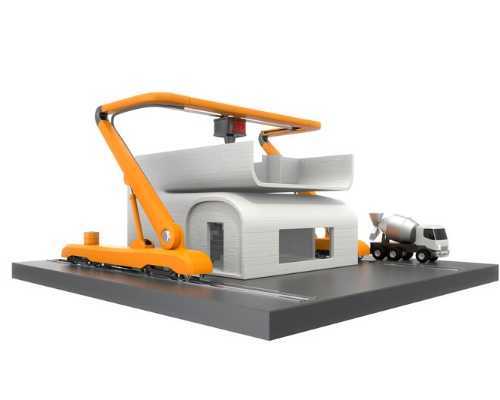6 Minute Read
December 3, 2019
0%
We end 2019 with mixed feelings as to what 2020 will bring. On one hand, the construction industry looks poised to continue growth, and more and more contractors are modernizing their operations and leading on some pretty cool innovations. On the other hand, there is growing fear that another economic downturn is on the horizon, and we’re already seeing small signs of potential disruption. Here’s a look at some of the storylines we’re following as we bring this decade to a close:

As we turn to a new year — and a new decade — opinions are mixed and outlooks slightly fuzzy about what the year ahead holds for the construction industry. A December Construction Dive article noted that 2020 could see construction continue to grow, though contractors likely facing higher costs, continued labor concerns and hesitant owners. The article noted a recent survey by the Associated General Contractors indicating that 75% of U.S.-based construction companies expected to add to their workforces next year, and that economists were bullish on certain sectors of construction, including pipelines, solar and data centers. Though construction may lag for medical facilities, and the lack of federal comprehensive infrastructure packages could slow growth of highway, utility and other civil projects — despite pressing needs. Meanwhile an article by Anirban Basu, the chief economist for the Associated Builders and Contractors in Construction Executive in December, noted that just because this has been the lengthiest economic expansion in American history (and many expect an impending recession), it does not necessarily mean a recession is coming anytime soon. He pointed to Australia as an example, which has not had a recession in more than 30 years. There are several strong indicators, including the job market to support this. However, Basu did note new risks that have emerged, including tariffs, the potential of trade deals falling apart and other political maneuvering that could significantly affect costs and profitability for contractors. Still, there appears to be plenty of work to do and plenty of room still to grow for contractors.
The Takeaway: The only thing that seems certain is continued uncertainty — at least in the short term. There are a lot of things to like about contractors prospects for prosperity heading into 2020 and even 2021. Short of some sort of prolonged government shutdown, we don’t expect any work to come to a screeching halt. The bigger question may be how the landscape looks in two or three years. Most contractors seem to agree that a recession – or at least a business shift is coming. Many are building up cash reserves to help sustain regular operations should any downturn occur. Others are modernizing their operations now by implementing the latest technologies and leading-edge software to gain efficiencies now, and better scale for future growth. There’s no wrong answer here, so long as contractors are staying on top of developments and following current trends closely.

Deere & Co., the maker of John Deere tractors and construction equipment, laid off 57 workers in its Davenport, Iowa manufacturing plant in December. According to the Des Moines Register, the company said that reduced building activity is expected to lower sales of its construction and forestry equipment by as much as 15% next year. This is the second round of layoffs at the plant. The company cut 113 employees in November. In Phoenix, Katerra is closing its 250,000-square-foot modular building facility and laying off 200 workers. The company is calling the move a realignment and is expected to open a 600,0000-square-foot facility with more than 500 workers in 2021. Despite national job and unemployment reports being mostly good news for the entire year, CNN did note in mid-December that the number of Americans filing for their first week of unemployment suddenly jumped to its highest level in more than two years. Economists that CNN spoke with were hesitant to note any kind of trend, saying it could simply be “an outlier due to seasonal noise.”
The Takeaway: Despite the buzz around this, the job market in construction still looks remarkably strong. What is intriguing here is where the layoffs are happening. Between equipment and materials, costs have steadily risen in construction, and contractors are tightening their belts and being more resourceful to maximize use, productivity and profitability. We don’t think this is a trend indicative of any downturn in business. It does, however, highlight why contractors are turning to new processes and integrated construction technologies to help maximize productivity and reduce waste.

An extensive patent for reinforced cementitious construction by high-speed extrusion printing has been granted to Armitron, an Arizona-based 3D printing company specializing in construction. The patent, according to 3dprintingindustry.com, involves “methods and apparatuses for an automated reinforced concrete construction system enabling onsite slip-form molding and casting of cementitious mixes. This is done in an externally moldable flexible reinforced containment sleeve. The automated, slip-form molding apparatus includes layer-wise interlocking with 3D printed cement deposition for improved mold casting of various structures.” Armitron said it hopes to use the patent and its 3D-printing innovations to help contractors overcome limitations of traditional construction, while improving safety and production on jobsites.
The Takeaway: 3D printing has been growing in popularity in construction. As the technology and materials used become more and more reliable, and modular or prefabricated designs and processes are more widely used, these innovations could change how projects are built. What isn’t as clear yet is how quickly local, regional and federal agencies that regulate and permit for construction will move in approving 3D printing. Many agencies have yet to allow for, or even effectively study 3D-printed materials in building codes and licensing processes. This could slow what could be a vital piece of modern, integrated construction.
Want more takes on news and issues permeating the construction industry? Be sure to subscribe to our blog for the latest trends and industry news, or visit viewpoint.com to learn how leading-edge technologies can help grow your construction operations.
6 Minute Read
December 3, 2019
6 Minute Read
October 1, 2019
6 Minute Read
October 30, 2019